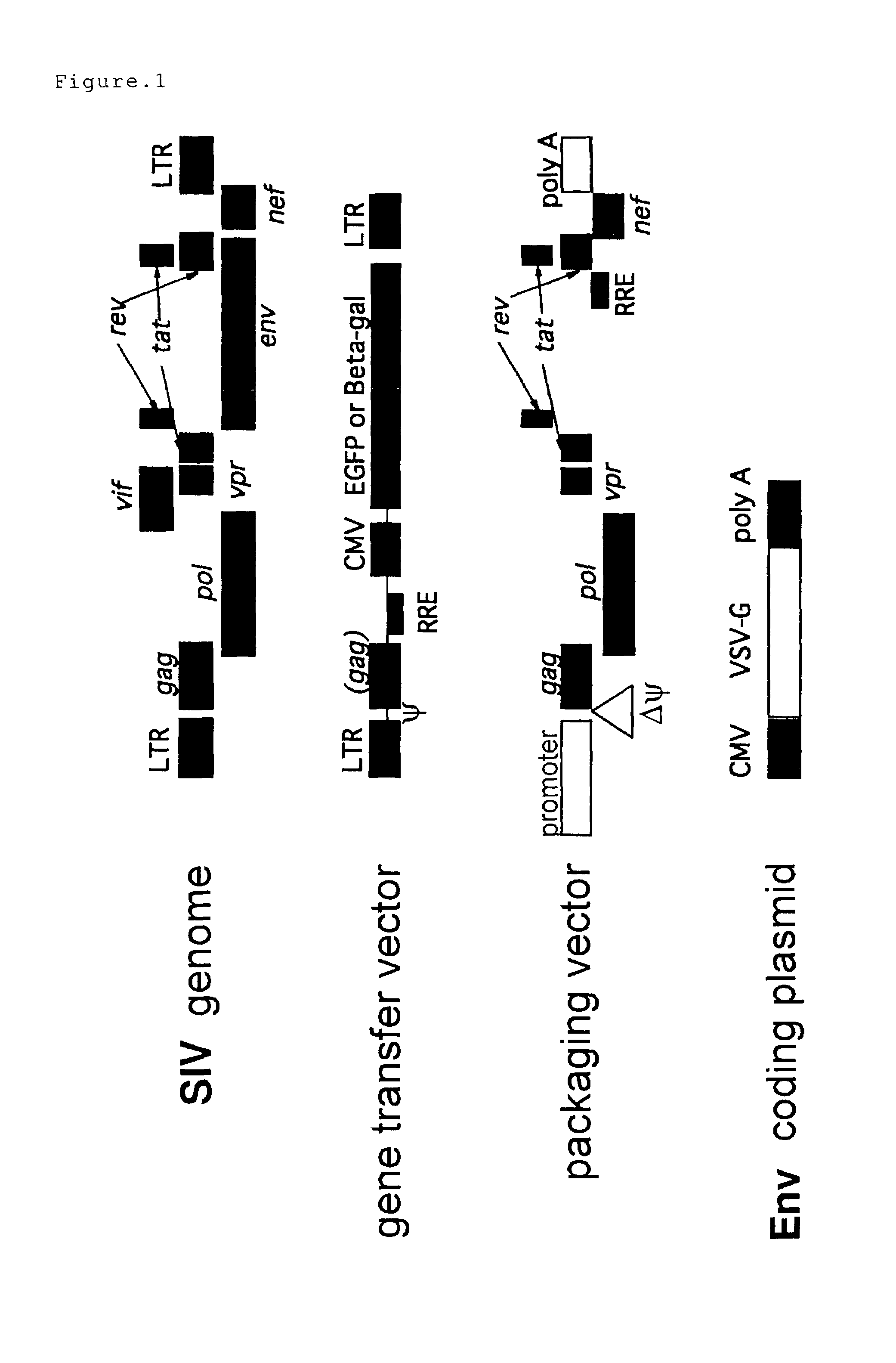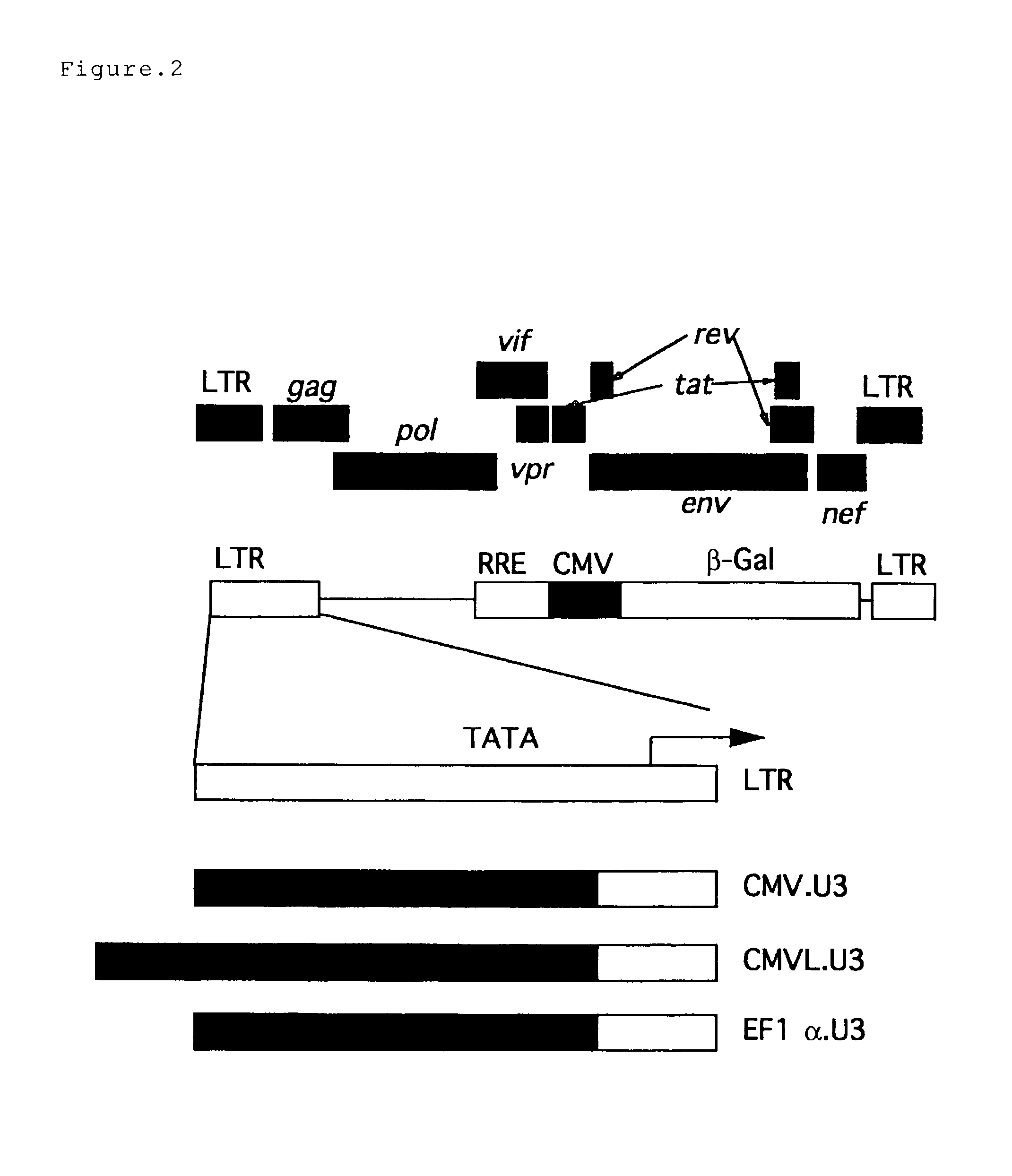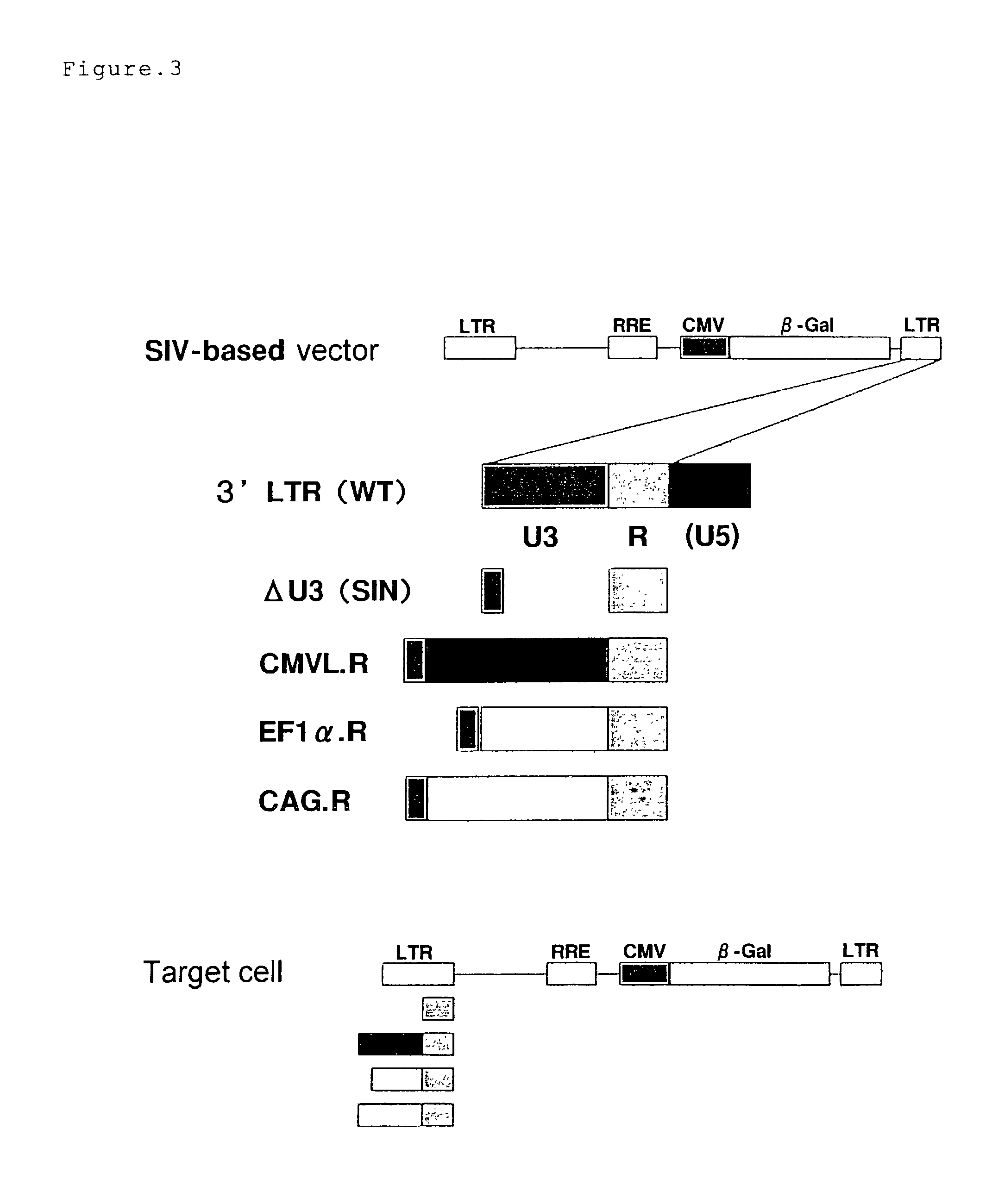Vector for the expression of two foreign genes
a technology of foreign genes and vectors, applied in the field of vectors for expressing foreign genes, can solve the problems of insufficient expression properties of these vectors, the expression level of genes on the 3′ side of ires is only 15 to 1/10, and the efficiency of gene transfer is reduced, and the efficiency of gene transfer may be affected
- Summary
- Abstract
- Description
- Claims
- Application Information
AI Technical Summary
Benefits of technology
Problems solved by technology
Method used
Image
Examples
example 1
Generation of SIVagm Vector and the Verification of its Performance
[0104]Generation of novel lentivirus vector was carried out as follows, using SIVagmTYO1, which is a nonpathogenic immunodeficiency virus clone derived from monkey. The outline of vector system is shown in FIG. 1.
[0105]SIVagmTYO1 comprising a clone of nonpathogenic immunodeficiency virus derived from African green monkey was used in the generation of vector system. Hereinafter, all nucleotide numbers are indicated with the transcription initiation site of the virus RNA as +1. pSA212 (J. Viol., vol. 64, pp 307–312, 1990) was used as a plasmid, in which SIVagmTYO1 had been inserted. Further, all ligation reactions were carried out using a Ligation High (Toyobo) according to the attached instruction.
a. Generation of a Packaging Vector
[0106]First, a DNA fragment corresponding to a region (5337–5770) containing vif and the first exon of tat / rev was obtained by PCR using pSA212 as a template and using primers 1F (SEQ ID NO...
example 2
Modification of 5′LTR
[0114]The transcriptional activity of 5′LTR from lentivirus is generally depends on the presence of Tat protein, which is a virus-derived factor. Thus, to eliminate the Tat dependence as well as to enhance the vector titer by the replacement with a promoter sequence having stronger transcriptional activity, an SIVagm gene transfer vector was generated, in which the U3 region that is a promoter sequence of the 5′LTR was replaced with another promoter sequence (FIG. 2).
[0115]The replacement of the 5′LTR with a chimeric promoter was achieved as follows. A fragment containing a region between downstream of TATA box on the 5′LTR to the gag region (9039–9170+1–982) was amplified by PCR using a series of primers 9-1F to 3F (SEQ ID NOs: 45–47) and a primer 9R (SEQ ID NO: 48) as well as using pSA212 as a template. Further, fragments each containing CMVL promoter (derived from pCI (Promega); 1–721), CMV promoter (derived from pEGFPN2 (Clontech); 1–568), EF1α promoter (nuc...
example 3
Modification of 3′LTR
[0116]In a lentivirus vector, as the U3 region, a promoter sequence, which is contained in the 3′LTR region, is integrated in the U3 promoter region of 5′LTR at the time of reverse transcription in target cells. It is found that the U3 region contained in the 3′LTR region of a gene transfer vector plasmid becomes the U3 promoter in 5′LTR participating in gene expression in the genome of target cells (FIG. 3). Thus, SIVagm gene transfer vectors were prepared, in which the U3 region of 3′ LTR was replaced with other promoter sequences that may be evaluated to determine whether or not the promoter, which relates in gene expression in target cells, can be replaced with other promoters other than the U3 sequence (FIG. 3). In addition, SIVagm gene transfer vectors were prepared, in which the U3 region of 3′ LTR was deleted, which may be evaluated to determine whether or not the promoter sequence on the 5′LTR in target cells can be deleted.
[0117]The modification and de...
PUM
| Property | Measurement | Unit |
|---|---|---|
| pore size | aaaaa | aaaaa |
| total volume | aaaaa | aaaaa |
| concentration | aaaaa | aaaaa |
Abstract
Description
Claims
Application Information
 Login to View More
Login to View More - R&D
- Intellectual Property
- Life Sciences
- Materials
- Tech Scout
- Unparalleled Data Quality
- Higher Quality Content
- 60% Fewer Hallucinations
Browse by: Latest US Patents, China's latest patents, Technical Efficacy Thesaurus, Application Domain, Technology Topic, Popular Technical Reports.
© 2025 PatSnap. All rights reserved.Legal|Privacy policy|Modern Slavery Act Transparency Statement|Sitemap|About US| Contact US: help@patsnap.com



